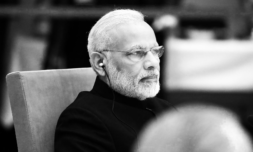Falling short of our most ambitious climate targets is a reality that nobody wants to face, but it needn’t be the end of hope.
At the Paris Climate Agreement, the world’s leading governments committed to keep global warming well below 2˚C (3.6˚F) above pre-industrial levels while trying to limit temperature increase to 1.5˚C (2.7˚F). Save a miracle, it’s exceedingly unlikely that the global community is going to meet this target.
The baseline aims set by world leaders in Paris was predicated on the advice of the Intergovernmental Panel on Climate Change (IPCC), who found that since human-based carbon emissions rose significantly during the Industrial Revolution, human activities had resulted in approximately 1.0°C of global warming above pre-industrial levels.
Though the proverbial train of warming had already left the station, the IPCC counselled that keeping the effects of climate change to below catastrophic level would require a concerted effort to cap rising temperatures at 2˚C by 2030.
The IPCC showed in a later report that the practical difference between 2˚C and 1.5˚C of average warming would in fact be the difference between mild and meteoric calamity.


At a 2˚C increase over pre-industrial levels, extreme heat events would be 2.6x worse on average, there’s be 10x more summers without sea ice, species loss would be up to 3x worse, and the sea level would rise 0.6m more compared to 1.5˚C.
The latter and more ambitious goal thus became the rallying cry for climate activists. Keep warming below 1.5˚C above pre-industrial levels between now and 2030, lest you be responsible for the havoc promised above.
The thing is, the world is currently on course to miss both their 1.5˚C and their 2˚C targets by 2030, and by quite a significant margin.
A full turn of the wheel would require rapid, coordinated, international action on a scale never seen in human history. The closest comparison scientists have found to the scale of effort required to fulfil the Paris goals is ‘mobilisation on the level of World War Two.’
To continue with this metaphor, when it came to the giant military and industrial leaps required by the world to deal with WWII, governments found it easy to incentivise a population with bombs falling on their heads.
When it comes to climate change, the capitalist oligarchies have more reason to underplay the threat. Moreover, the physical presence of our adversary is far more distant and harder to gauge. The unfelt facts of glaciers melting in the far off arctic and insect populations declining don’t often register emotionally with the average citizen, and war time levels of fear have not been reached.





















